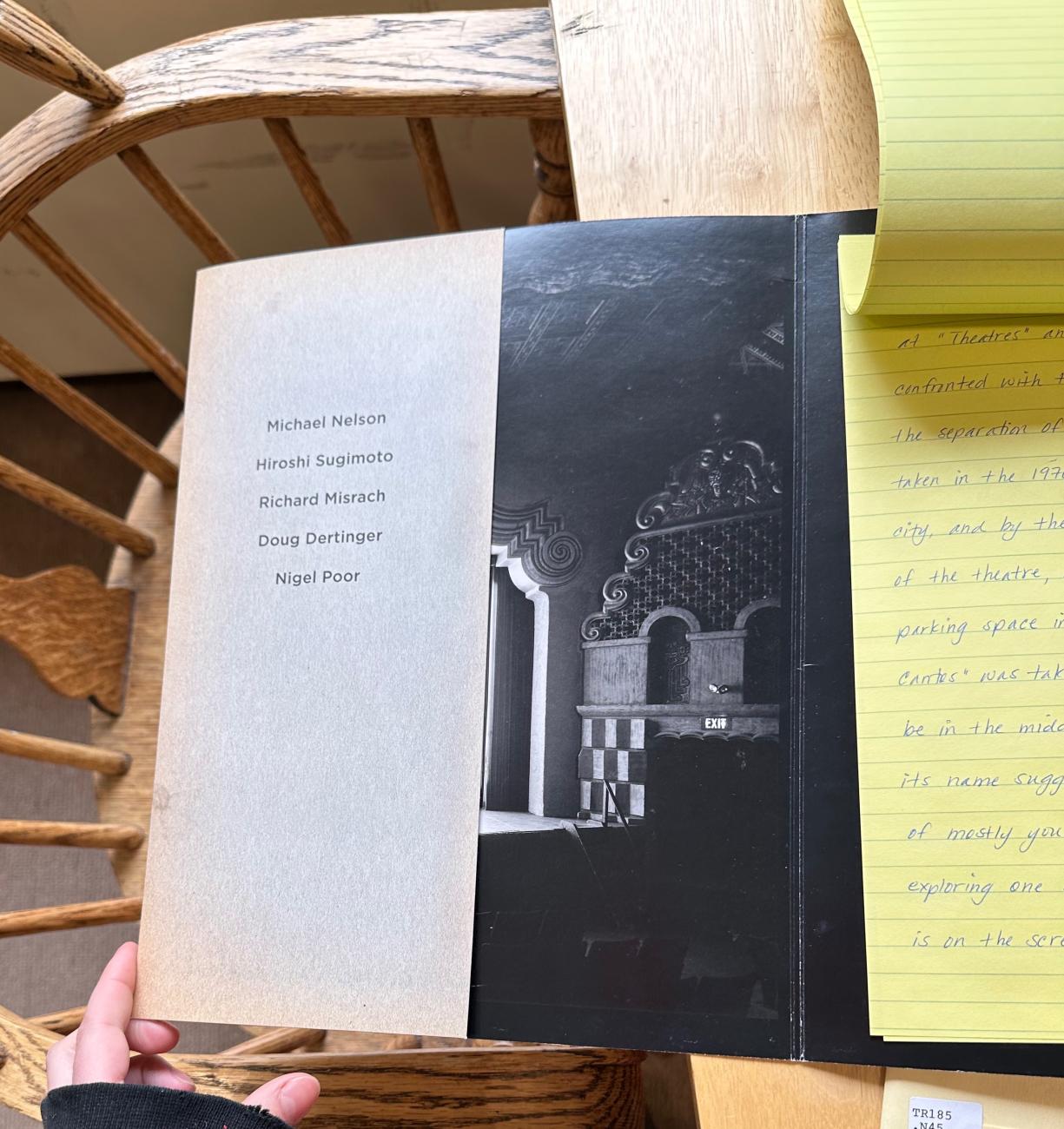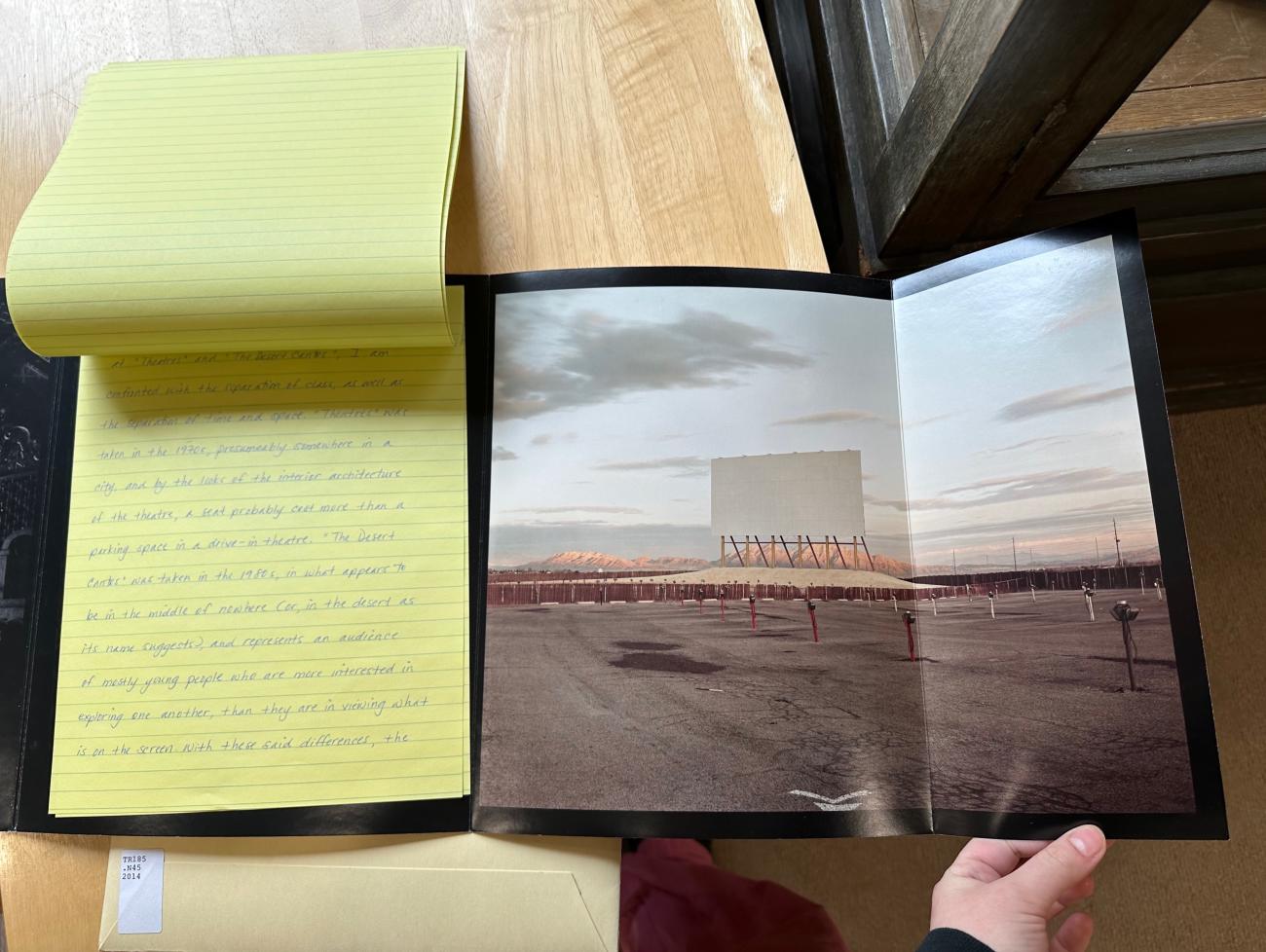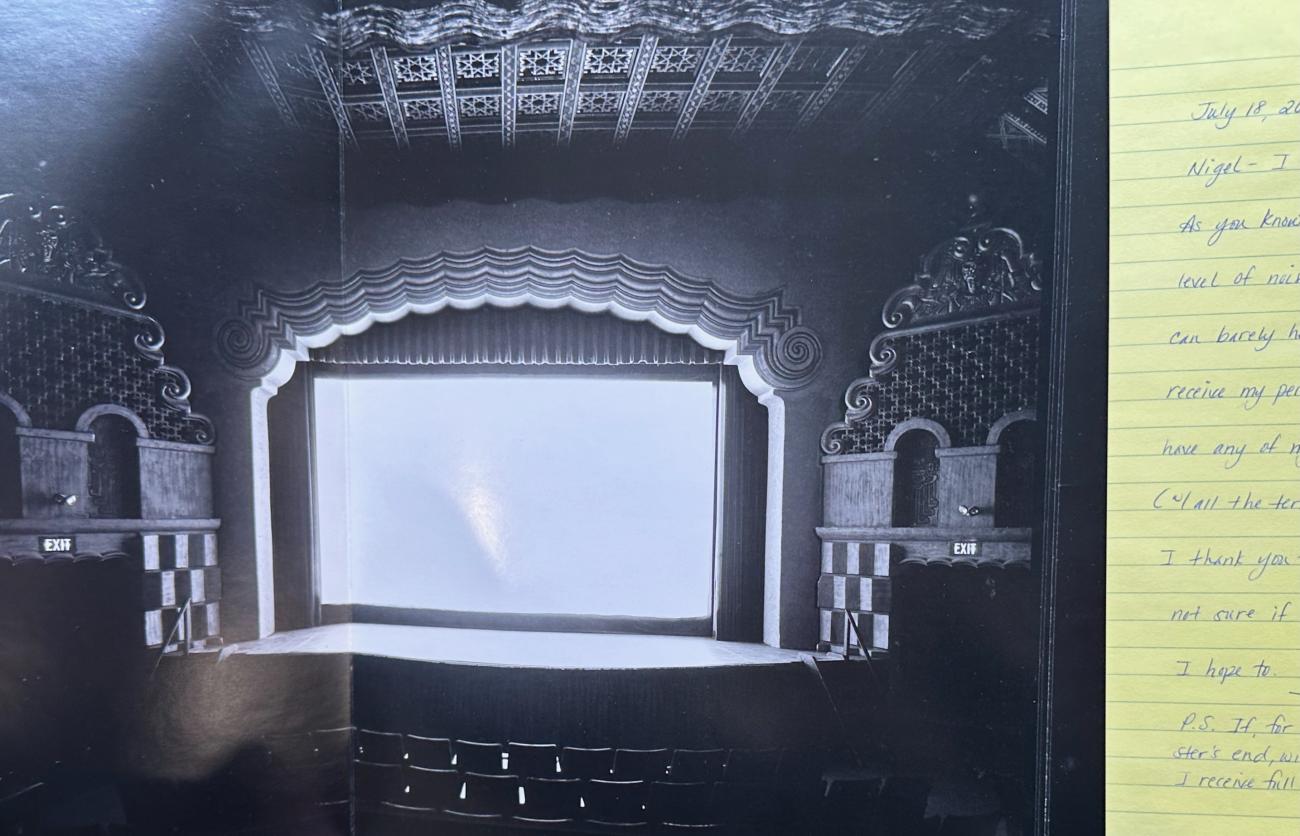Assignment No. 2 by Michael Nelson takes its name from an essay prompt for Visual Concerns in Photography, a class led by artists and professors Doug Dertinger and Nigel Poor at the San Quentin Prison. For the second written response prompt of the class, each student was given two photographs by different artists, and asked to analyze them. In an interview with Pete Brook, Nigel Poor disclosed that “the only things the students knew about the works were the artists’ names, the dates, and the titles.”
The book features one essay written by Michael Nelson, an incarcerated man serving a 25 to life sentence in San Quentin Prison. Shortly after receiving the prompt, Nelson was placed in solitary confinement for 4 weeks, where he completed the assignment.
Published in 2014 by TBW Books, three years after Nelson wrote the essay in July of 2011, Assignment No. 2 discusses an inmate's experience through the visual analysis of two photographs, The Desert Cantos by Richard Misrach and Theatres by Hiroshi Sugimoto.

Upon opening the folio, the yellow legal pad is laid out in front of the reader as if it had been sitting on their own desk the whole time. The handwritten text on blue lines feels familiar, and makes the reader aware of the humanity of the writer. Nelson's voice is distinguished by the presence of his hand, the evidence of human intervention. Readers are able to relate to and put themselves in the author's place through the use of this accessible visual language. An incarcerated person’s experience in prison is effectively relayed through the discussion of images paired with the recognizability of a person's handwriting. Towards the end of his analysis, Nelson writes “the two photographs remind me of those who get left behind by not being able to keep up with the change that lives and breathes through-out time…I think of being locked up in prison where time seems to stand still, while the world outside moves on without me.”


Two images fold out next to either side of the legal pad, centering the writing as the main focus of the book. The photographs act as landmarks alongside the essay, encouraging readers to go back and forth between the images and text. Although the photographs are not the central focus, their larger size, and requirement of interaction from the reader to unfold them, makes it so they carry as much weight and attention as the writing piece. When unfolded, the sequence reads as a continuous strip. The black background connects the three pieces while creating borders to distinguish them from each other.
The photographs themselves reflect the emptiness and isolation Nelson experiences as an incarcerated person. The black and white photograph, Theatres, shows a dark, empty theater illuminated only by a blank white screen and an exit sign. In The Desert Cantos, an empty drive-in theater blends into the landscape, while the dull screen rises higher than the mountain range behind it. The images were taken in different times, spaces and visual languages, yet they are connected by their lack of human presence. Neither theater has an audience, nor is displaying anything that could be watched. Yet, not seeing a present audience is not what indicates the emotional connection between the photographs and writing. Instead, it is the knowledge that there once was an audience that has now moved with the world's changes, leaving the spaces abandoned and frozen in time. As an incarcerated person, Nelson has also been suspended in time and place. Unable to connect with the outside world, he cannot move on with the changes happening, and there is no audience to witness him.
Aesthetically, Assignment No. 2 emphasizes the book as an object and grounds the reader in its literary and conceptual framework. The cover is designed to look like a worn manilla folder through which the assignment materials and essay would have been passed between teacher and student. The title and date are hand-stamped on the cover, reflecting the intervention and intrusiveness of the prison system. Everything about an inmate's life is regulated; all non-privileged documents and mail are subject to investigation and must pass through prison officials before reaching their destination. As the reader opens the folder and sits with the legal pad in front of them, they are placed in the position of both author and intervenor, faced with the tasks of analyzing the information for themselves, and handling the document.
A metal prong fastener holds the lined paper in place, like a true file folder. Despite it being a printed reproduction, the quality of the paper looks and feels exactly like the thin yellow paper Nelson originally wrote on. The interactive and tactile elements of Assignment No. 2 give the reader a sense of familiarity that creates space for understanding and reflection. The book is designed in a way that breaks the information down and considers the reader's experience.

The order in which details are revealed, some only after physically unfolding or turning a page, sets a pace and encourages readers to keep looking until they get the whole picture. The most influential aspect of Assignment No. 2 is the inventive and detail-oriented thought that went into making a book that can be an interactive sculptural object, and comprehensible yet powerful.
Related books in the library collection
Theaters
Hiroshi Sugimoto, 2016
Theaters
Hiroshi Sugimoto, 2000
Desert cantos, 1979-1999
Richard Misrach, 1999
Crimes and splendors: the desert cantos of Richard Misrach
Richard Misrach, 1996